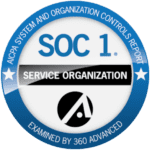Navigating the complexities of freight claims management can be a daunting task for even the most seasoned professionals in the logistics and transportation industry.
At its core, freight claims management involves the process of filing, monitoring, and receiving compensation for lost, damaged, or delayed shipments—a critical aspect that can significantly impact customer satisfaction and a company’s bottom line.
In this comprehensive guide, we’ll unravel the facts of freight or cargo claims management, offering insights and strategies to streamline your processes and mitigate losses.
Understanding Freight Claims
Before delving into the intricacies of freight claims management, it’s essential to understand the types of freight claims commonly encountered:
-
Damage Claims: These are initiated when goods arrive in a compromised state, diminishing their overall value or functionality. Such claims are vital for businesses to recover losses or replacement costs associated with the damaged goods.
-
Loss Claims: These claims are necessary when a shipment completely fails to reach its intended recipient. They address the need to either locate the missing shipment or compensate for the total loss incurred.
-
Shortage Claims: These occur in situations where a shipment arrives but with a portion of the expected items missing. It highlights issues in the supply chain or delivery process, necessitating investigation and compensation for the unfulfilled parts.
-
Concealed Damage or Loss Claims: Involve situations where damage or loss to the goods is not immediately apparent at the time of delivery and is only discovered after the goods have been unpacked. These claims are particularly challenging to navigate due to the difficulty in proving the damage occurred before receipt, necessitating a thorough documentation and reporting process.
The Claims Management Process
Cargo claims management is a multistep process requiring meticulous attention to detail. Here’s an overview of the key steps involved:
Filing a Claim
1. Immediate Inspection: Upon receipt of the shipment, it’s crucial to conduct a thorough inspection for any signs of damage or discrepancy. Timing is critical, as most carriers impose strict deadlines for claim notifications.
2. Documentation: Compile all relevant documentation, including the bill of lading, packing list, photos of the damaged goods, and a detailed inspection report. This documentation forms the backbone of your claim and can significantly influence its outcome.
3. Claim Submission: Submit the claim to the carrier in the manner and timeframe specified in their policy. Ensuring compliance with these requirements can prevent unnecessary delays or denials.
Monitoring and Resolution
1. Follow-Up: Regular follow-ups with the carrier are essential to keep the claim moving through the process. Maintaining open lines of communication can help expedite resolution.
2. Negotiation: It’s not uncommon for the initial compensation offer from a carrier to be below the claimant’s expectations. Be prepared to negotiate for a settlement that adequately covers your loss.
3. Legal Consideration: In cases where a resolution cannot be amicably reached, seeking legal advice may be necessary. This step should be considered a last resort due to the time and costs involved.
Best Practices for Effective Freight Claims Management
Proactive Measures
-
Adequate Packaging: Ensure your goods are properly packaged and labeled to withstand the rigors of transportation. This simple step can significantly reduce the likelihood of damage claims.
-
Carrier Selection: Choose carriers with a strong reputation and track record. While cost is an important consideration, reliability and service quality should not be overlooked.
-
Insurance: Consider purchasing additional cargo insurance for high-value or high-risk shipments. Carrier liability limits may not fully cover your potential losses.
Policy Familiarization
-
Know Your Rights and Responsibilities: Thoroughly understand the terms and conditions outlined in your carrier agreements. Familiarity with these details can empower you in claim negotiations.
-
Establish Internal Processes: Having a standardized process for filing and managing claims can help ensure consistency and minimize errors.
Communication
-
Internal Communication: Effective communication between different departments within your organization is critical to expedite claim resolution. This coordination can also highlight any recurring issues that may require corrective measures.
-
External Communication: Maintain open lines of communication with carriers throughout the claims process, providing prompt responses and updates as needed.
Technology Utilization
-
Claim Management Software: Leverage technology to streamline your freight claim processes. Many software solutions offer features like document storage, automatic deadline reminders, and claim status tracking, reducing the administrative burden on your team.
The Role of Technology in Streamlining Freight Claims
In the digital age, technology plays a pivotal role in transforming freight claims management from a cumbersome process into a more streamlined and efficient operation. Innovative solutions can automate much of the legwork, allowing logistics professionals to focus on more strategic tasks. Key benefits include:
-
Increased Visibility: Real-time tracking and analytics provide greater insight into shipping patterns, helping identify areas prone to issues.
-
Improved Accuracy: Digital documentation reduces the risk of errors and omissions, ensuring that claims are filed correctly the first time.
-
Enhanced Productivity: Automation frees staff from manual, time-consuming tasks, increasing efficiency and allowing for more strategic allocation of resources.
-
Streamlined Communication: Technology enables seamless communication between carriers, customers, and other stakeholders, minimizing delays and facilitating faster resolutions.
Conclusion
Effective freight claims management is a critical component of successful logistics operations.
By understanding the types of claims, mastering the claims process, and adopting best practices and technology, businesses can mitigate the impact of shipping incidents on their operations and customer relationships.
In doing so, they not only protect their bottom line but also strengthen their reputation for reliability and customer service excellence in an increasingly competitive marketplace.
Remember, the goal is not just to manage freight claims but to minimize their occurrence through proactive measures and strategic partnerships. By focusing on quality, communication, and innovation, your business can achieve a smoother, more resilient logistics operation.
Are You Ready To Revolutionize Your Freight Claims Management Process?
Contact Hatfield & Associates LLC today. Our team of experts is dedicated to helping you streamline your operations, minimize losses, and enhance customer satisfaction through cutting-edge logistics solutions. With our comprehensive approach, we guide you every step of the way, from understanding your rights and responsibilities to implementing technology that drives efficiency.



